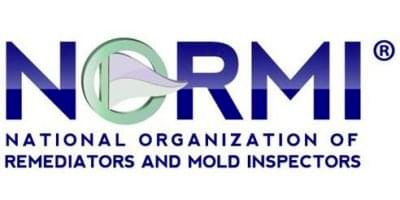How to Prevent Mold in Your Bedroom
Did you know that the average American spends 93% of their lives indoors? With so much of your time being spent inside, it makes sense to want the environment you’re in to be as healthy as possible.
Indoor mold is always worrisome, but mold in the bedroom is especially so because it is often the most used room of a home. It’s up to you to protect yourself from mold exposure, whether you own or rent your home. The following article will help you accomplish this important responsibility.
What Is Mold?
Mold is a common type of fungus that thrives in moist, warm conditions. It’s an important part of our ecosystem and yet it can be a nuisance.
Due to high humidity and moisture levels, basements and bathrooms are the most likely rooms in a home to harbor mold. But mold can grow anywhere – including your bedroom.
When mold spores land on a damp spot they can begin to grow, digesting the material they are growing on as they do so. The spores can form a type of mold that is airborne and will irritate your eyes, affecting your breathing, or giving you a ‘stuffed up’ feeling as your sinuses become inflamed.
Common Causes of Bedroom Mold
Mold in the bathroom and kitchen is often caused by constant humidity from steam. But when it comes to the bedroom, regular humidity and condensation are usually to blame.

Humidity levels, in this case, may not be comparable to the other two locations, but it can nonetheless cause mold.
When inspecting your bedroom for mold, you want to pay attention to the ceilings, windows, and walls first. You should also check clothes, floors, and even plants (if you have some decorating your bedroom).
In addition, check to see whether your bedroom is well ventilated. If it’s not, it can be a veritable breeding ground for mold.
Left unaddressed, mold can make your indoor spaces very uncomfortable. Prolonged exposure to mold can even lead to considerable health repercussions. Not to mention the structural damage it can cause to your property.
If you’ve completed your inspection and have not found any sign of mold, then this is great news! However, if you have, then you should call in an expert as soon as possible.
Is There A Link Between Mold and Sleep Issues?

If you experience frequent sleep problems, it may be time to test for mold. Below are several studies that link sleep problems to mold exposure among varying age groups:
-
In senior adults: A 2015 study looked at the effects of the mold odor alone on older adults. Those living in buildings with mildew odor or a musty smell were more likely to have poorer health and suffer with the likes of sleep issues, sneezing, chronic bronchitis, skin rash, and asthma attacks.
-
In children: A 2015 study involving children compared those living in dry bedrooms against those living in damp bedrooms. As expected, the children living in the damp bedrooms showed higher risk of sleep issues.
Evidently, there is a link between mold exposure and sleep problems. Sleep problems associated with mold include:
-
Daytime fatigue: This is one of the most recognizable signs of sleep deprivation. When a person is fatigued, their productivity and emotional well-being suffer as they have lower energy and motivation.
-
Sleep deprivation: When we are sleep-deprived, we’re less focused, moodier, and at heightened danger of social isolation. There is also an increased chance for health complications like cardiovascular diseases and diabetes.
-
Insomnia: If you are dealing with a runny nose, watery eyes and wheezing from mold, you tend to have trouble falling asleep.
-
Sleep apnea: This is a form of serious sleep-disordered breathing. It occurs from a narrowing or blockage of the airways.
How Do I Create a Mold-Resistant Bedroom?
1. Ventilation
Improving the ventilation in key areas of your home is one step toward mold prevention. When you wake up each morning, get into the habit of opening all your bedroom windows and leaving them open for a while.
This will help to achieve two things. Firstly, you’ll have fresh air instead of stale “night air.” Secondly, you’ll have lower levels of humidity as you ventilate the room.
But if you live in a highly humid area like Florida, it may be best to rely on air conditioners or dehumidifiers. Simply opening windows won’t do much good in these cases.
2. Plants
Notice any fuzzy white stuff on your plants or plant stems? It’s likely powdery mildew! The fungus spores generally attach themselves to a young leaf. Here, they are able to germinate and grow quickly, spreading to other parts of the plant and nearby areas.
Mold can also be found in houseplant soil. While the fungus doesn’t damage the plant, it’s unsightly and shows that there is clearly a problem. The dusty-looking mold is usually caused by poor drainage, overwatering the plant and/or contaminated potting soil.
3. Carpet
Carpets can make your home look tidier and more appealing. But, did you know that your carpet could be making you sick?
Beneath a carpets’ surface, hundreds of pathogens and allergens can be found. From animal feces and pet dander to bacteria and mold spores. Because dirt is essentially food for mold, it’s crucial to keep your carpet clean to keep mold at bay.
Additional Mold Prevention Tips

- Keep your mattress clean by vacuuming it regularly.
- Purchase a hypoallergenic mattress and use a waterproof mattress cover.
- Place bedroom furniture away from the walls, to enable air flow and prevent mold growth.
- Make sure all clothes are completely dry after cleaning them and don’t put them away or fold them until they are.
- Is your bedroom connected to your bathroom? If so, open the window immediately you shower. Alternatively, run the exhaust fan for at least half an hour after showering.
- Keep your bedroom door open to ensure air flow circulation. If you live in an area that’s prone to humidity, use a dehumidifier to keep the inside air dry, or regularly run your air conditioner and ceiling fans.
- Clean and dry the area immediately whenever water spills in your bedroom.
The key to preventing mold in your bedroom is simple: moisture control. Use the helpful tips above to help identify and correct potential problem areas in your bedroom. If you do this, you can sleep soundly knowing that your mold problems are a thing of the past.
If you suspect you already have mold in your home and require testing don’t hesitate to contact us at Markham Services.


